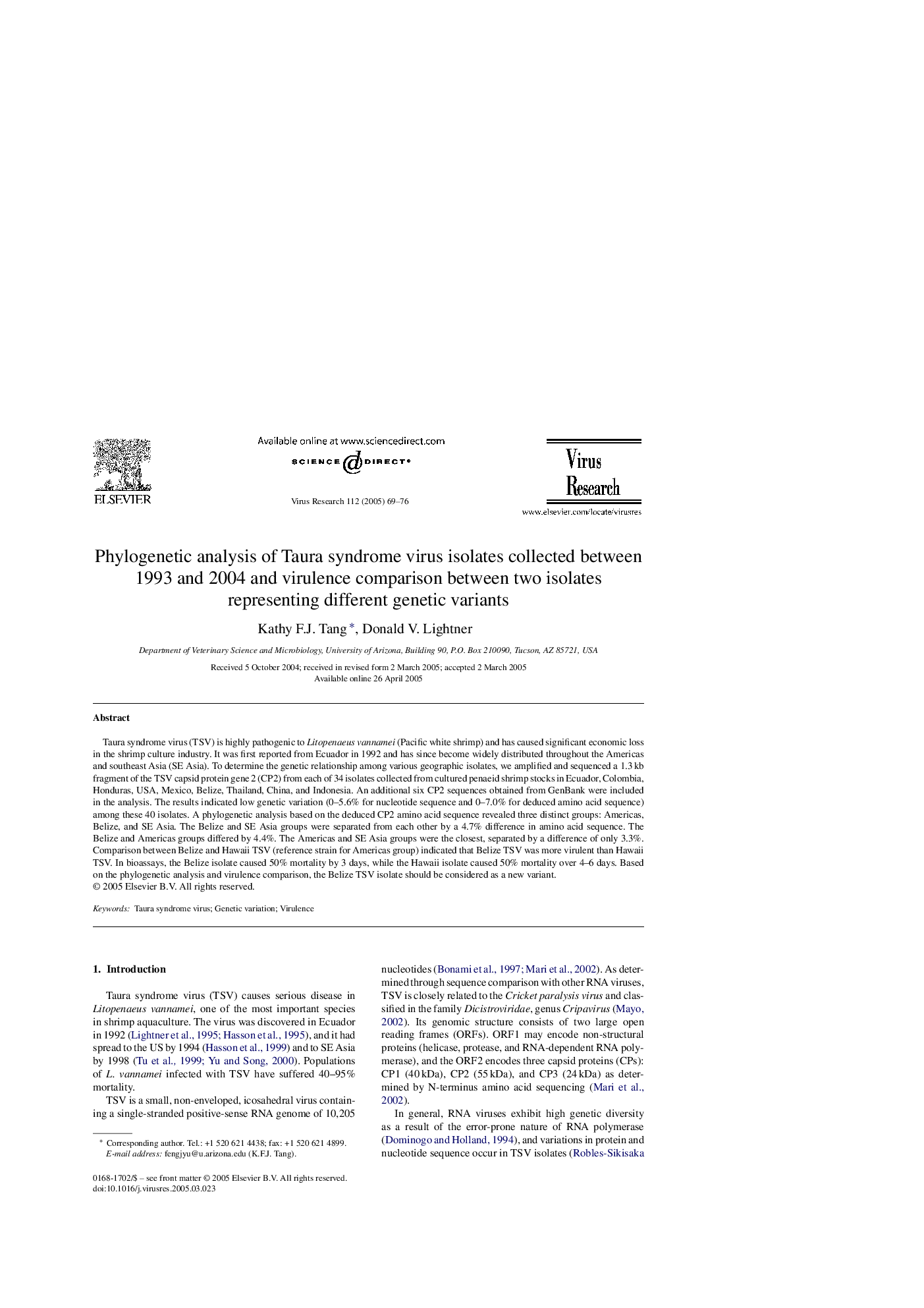| Article ID | Journal | Published Year | Pages | File Type |
|---|---|---|---|---|
| 9289340 | Virus Research | 2005 | 8 Pages |
Abstract
Taura syndrome virus (TSV) is highly pathogenic to Litopenaeus vannamei (Pacific white shrimp) and has caused significant economic loss in the shrimp culture industry. It was first reported from Ecuador in 1992 and has since become widely distributed throughout the Americas and southeast Asia (SE Asia). To determine the genetic relationship among various geographic isolates, we amplified and sequenced a 1.3Â kb fragment of the TSV capsid protein gene 2 (CP2) from each of 34 isolates collected from cultured penaeid shrimp stocks in Ecuador, Colombia, Honduras, USA, Mexico, Belize, Thailand, China, and Indonesia. An additional six CP2 sequences obtained from GenBank were included in the analysis. The results indicated low genetic variation (0-5.6% for nucleotide sequence and 0-7.0% for deduced amino acid sequence) among these 40 isolates. A phylogenetic analysis based on the deduced CP2 amino acid sequence revealed three distinct groups: Americas, Belize, and SE Asia. The Belize and SE Asia groups were separated from each other by a 4.7% difference in amino acid sequence. The Belize and Americas groups differed by 4.4%. The Americas and SE Asia groups were the closest, separated by a difference of only 3.3%. Comparison between Belize and Hawaii TSV (reference strain for Americas group) indicated that Belize TSV was more virulent than Hawaii TSV. In bioassays, the Belize isolate caused 50% mortality by 3 days, while the Hawaii isolate caused 50% mortality over 4-6 days. Based on the phylogenetic analysis and virulence comparison, the Belize TSV isolate should be considered as a new variant.
Related Topics
Life Sciences
Immunology and Microbiology
Virology
Authors
Kathy F.J. Tang, Donald V. Lightner,
